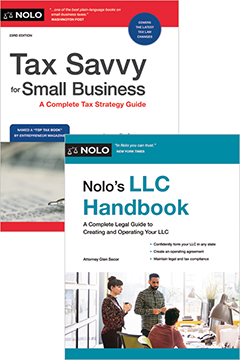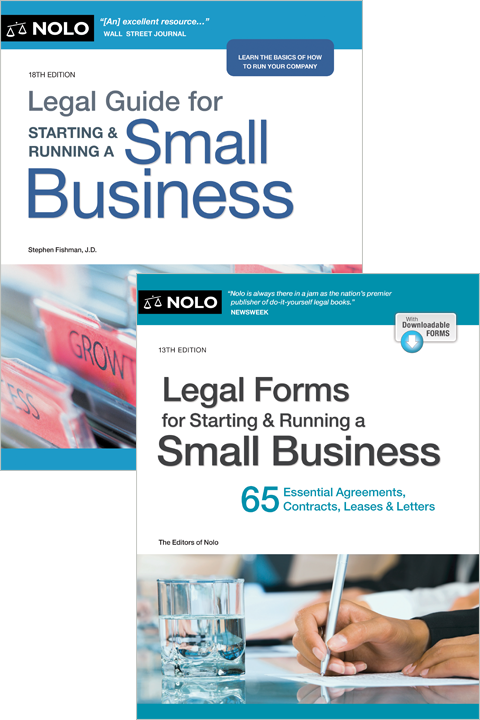Turning your corporation into an LLC is a less common entity conversion with complicated legal and tax implications. Take a look at the three different conversion methods, how states differ in their requirements, and what you can expect out of this process.
The process for converting your small business from a corporation to a limited liability company (LLC) will vary depending on multiple factors. While we can't cover every possible variation, here's a quick look at some of the more basic issues for this type of conversion.
- Why Businesses Convert Corporations to LLCs
- Different Elements of Conversions
- Three Types of Corporation to LLC Conversions
- Important Tax Considerations When Converting Your Corporation to an LLC
- State-Specific Conversion Requirements
- What to Do After Filing Your Conversion Paperwork
- Getting Help With Converting Your Corporation to an LLC
Why Businesses Convert Corporations to LLCs
You might decide to switch from a corporation to an LLC because an LLC provides advantages that a corporation doesn't. If you have a small business, you might particularly benefit from an LLC's customizable structure.
Let's look at a few of the ways an LLC might be preferable to a corporation:
- LLCs offer a more flexible, less rigid management structure whereas corporations must follow strict procedures to approve corporate decisions through the shareholders, officers, and board of directors (for example, holding board meetings and drafting corporate resolutions).
- LLCs can be taxed as pass-through entities so that only the members are taxed on profits; corporations can only enjoy pass-through taxation if they elect S corporation (S corp) status.
- LLCs can distribute profits to members not based on the members' shares; corporations have to distribute profits per share.
However, if your corporation is already taxed as an S corp and you don't need to differentiate between ownership shares and profit shares, then you might not see much benefit from converting your corporation to an LLC.
For more, read about the differences between LLCs and corporations.
Different Elements of Conversions
First, there isn't just one tax status for an LLC, one kind of corporation, or one kind of conversion. On the contrary, there are:
- LLCs taxed as partnerships, LLCs taxed as corporations, and LLCs taxed as "disregarded entities"
- single-member and multi-member LLCs
- C corporations (that pay corporate taxes) and S corporations (that have pass-through taxation so that only the shareholders pay taxes); and
- multiple methods for converting your business—including statutory conversions, statutory mergers, and nonstatutory conversions.
With these variables in mind, it's important to understand the differences in business and tax structures and in conversion methods. Here we'll try to simplify matters and look mainly at closely held C corporations converting to multi-member LLCs (the most common scenario).
Three Types of Corporation to LLC Conversions
There are three types of conversion methods that states recognize. You should check your state's business laws to see which type of conversions your state allows.
Statutory Conversion
A statutory conversion is a relatively new, streamlined procedure that's available in many states. This method allows you to convert your corporation to an LLC by filing a few forms with the secretary of state's office. Each state that allows statutory conversions has its own specific forms and rules.
However, generally speaking, steps for a statutory conversion include:
- having the corporation's directors approve the conversion and prepare a plan of conversion
- having the directors recommend approval of the conversion plan to the shareholders
- having a majority of shareholders vote to approve the conversion; and
- filing a certificate of conversion—sometimes called "articles of conversion"—and, as necessary, also LLC articles of organization (and other required documents) with the secretary of state (SOS) or other filing office.
While there are important technical distinctions between a statutory conversion and other types of conversions, the practical effects are the same:
- people who were corporate stockholders are now members of your new LLC
- the assets and liabilities of your corporation are now assets and liabilities of your new LLC, and
- your corporation ceases to exist.
A key point about statutory conversions is that all these effects occur automatically by operation of law rather than through separate, formal agreements. Though, you should still address how corporate stock will be exchanged for membership interests in either your plan of conversion or in a separate agreement.
Statutory conversion is usually the quickest and most inexpensive way to convert from a corporation to an LLC. In those states where it's available, this type of conversion will generally be your best option.
Statutory Merger
A statutory merger is more complicated than a statutory conversion. However, if your state doesn't allow for statutory conversions, you'll likely use this method. While specific details will vary from state to state, the basic steps of a statutory merger usually include:
- forming a new LLC (which means your corporation shareholders will now be LLC members)
- having the corporation stockholders vote to approve the merger both in their roles as corporate stockholders and as LLC members
- having the stockholders formally exchange their shares for LLC membership rights through a merger agreement; and
- filing a certificate of merger and any other legally required documents with the SOS.
Like with a statutory conversion, a statutory merger automatically transfers your corporation's assets and liabilities to the new LLC by operation of law. However, unlike statutory conversions, you'll likely have to file a form that formally dissolves your corporation.
Apart from the conversions and mergers that are specifically laid out in state law, you can find a workaround solution to convert your corporation into an LLC with a nonstatutory conversion.
Nonstatutory Conversion
A nonstatutory conversion is generally the most complicated and expensive way to convert from an LLC to a corporation. You'll have to not only legally form your LLC and formally exchange corporation shares for LLC membership interests (as with a statutory merger), but you'll also have to undertake the process of transferring your corporation's assets and liabilities to your newly formed LLC.
As part of this process, you'll need to formally liquidate and then dissolve the corporation, including filing all necessary dissolution documents with the SOS.
If you need to go through a nonstatutory conversion, you'll need expert legal assistance. However, in most cases, you should be able to avoid using this approach.
Important Tax Considerations When Converting Your Corporation to an LLC
The tax consequences of converting your corporation to an LLC could be drastic. When the assets of your old corporation are transferred to your new LLC, you'll likely be taxed on this transfer. The corporation will be taxed for the sale or transfer of its assets ("liquidation"), and the shareholders, too, are taxed on the assets distributed to them.
While there could be some circumstances that'll substantially reduce the taxes involved in this type of conversion, in many cases the negative tax consequences will outweigh any potential advantages of the conversion. Before you start the conversion process, you should investigate closely how the conversion would materially benefit the business.
In general, the tax consequences associated with converting from a corporation to an LLC will be complicated. Ultimately, however, for any kind of corporation-to-LLC conversion, you should consult with an experienced tax adviser.
State-Specific Conversion Requirements
Every state has different requirements for converting a corporation to an LLC. For example, Florida law allows for statutory conversions. To convert your corporation to a Florida LLC, you'll need to prepare and approve a plan of conversion. After the plan is approved, you'll file a certificate of conversion and articles of organization with the Florida Department of State.
For more information, read about converting your corporation to an LLC in Florida.
Check your state's specific business laws for specific rules about converting your corporation to an LLC.
Be aware that while some states have simple forms to fill out, other states don't provide any forms. It's simply up to the filer to create articles of conversion or articles of organization. If you need help drafting these documents, talk to a business attorney. They can draft these articles for you or review any documents you draft yourself.
What to Do After Filing Your Conversion Paperwork
Regardless of which conversion method you choose, you still need to take care of all the tasks normally associated with creating a new LLC, such as:
- filing a set of articles of organization or equivalent document with the SOS's office, including an indication that you're converting from a corporation (in some states, the articles of organization might serve as the conversion form)
- choosing between a member-managed or manager-managed LLC
- drafting an operating agreement, and
- deciding how your LLC will be taxed.
Also, although various IRS guidance isn't entirely clear, you might need to obtain a new employer identification number (EIN) as part of the conversion process.
For more information, read our article about how to form an LLC.
One other key step in the conversion process is to make sure that no business contracts—like bank documents, loan agreements, and commercial leases—will be affected by your business's entity change. Check for any specific provisions in these documents, such as requirements to provide notice of the entity change.
Getting Help With Converting Your Corporation to an LLC
Before you go through the official process of converting your corporation to an LLC, you should make sure it's the right choice. Talk to a business or corporate attorney about the benefits and drawbacks of the conversion. Because the tax implications of converting your corporation can be tricky and significant, you should also consider talking to a tax attorney or tax adviser as well.
If you do decide to convert your corporation to an LLC, check out your state's laws on converting corporations. These laws will likely be found under a title or chapter called "businesses and associations" or "corporations." Some states are more straightforward with their requirements than others. If you have questions about the proper procedure, talk to an attorney. They can walk you through the process, submit your conversion paperwork for you, and draft your articles of organization for your new LLC.
For a more complete discussion of the steps involved in forming an LLC, consult Form Your Own Limited Liability Company: Create an LLC in Any State, by Anthony Mancuso (Nolo). This book has guidance on choosing a management structure for your LLC and writing your articles of organization and operating agreement.
Protect Your Business
Create your LLC with Nolo
- Why Businesses Convert Corporations to LLCs
- Different Elements of Conversions
- Three Types of Corporation to LLC Conversions
- Important Tax Considerations When Converting Your Corporation to an LLC
- State-Specific Conversion Requirements
- What to Do After Filing Your Conversion Paperwork
- Getting Help With Converting Your Corporation to an LLC



